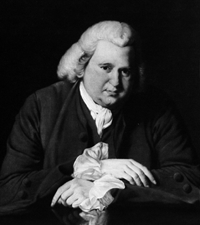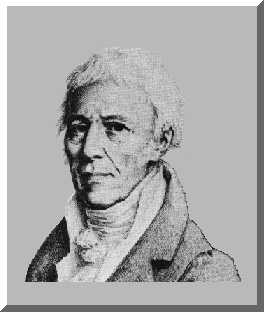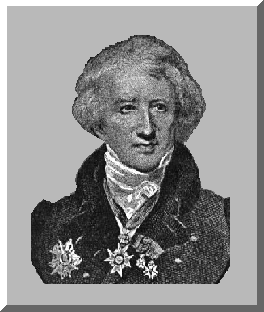Reece's bio log
Tuesday, May 22, 2012
Genetic Testing
Genetic testing gives the ability for doctors to let you know if you have a deadly desease before you get it. The question we are here to answer is weather or not you should get the news before it happens. To answer this question you have got to put yourself into the position the girl in the video I watched was. Her mom had was diagnosed with Huningtons disease, which is very deadly. Her mom ended up dying and now her daughter is going to find out if she got the disease from her traits. Would you want to know if that was you? To me I would want to know, just so I could tell my family to get them ready for it. I wouldn't want to get everyone feeling sorry for me so I would probably only tell my family. This is just my opinion and many people will probably have a different one.
Evolution
1. Erasmus Darwin- He was the first one to start the theory of evolution. He spent most of his time figuring out how a animal could evolve into what it is today.
 2. Jean Baptiste Lamarck- Jean was not know as a good scientists. He was always over looked, and people thought his ideas were a little crazy. He was actually the first one to come up with the idea of inheritance of acquired traits.
2. Jean Baptiste Lamarck- Jean was not know as a good scientists. He was always over looked, and people thought his ideas were a little crazy. He was actually the first one to come up with the idea of inheritance of acquired traits. 
3. Georges Cuvier- George Cuvier was with out a doubt one of the first fine minds in the science world. He came up with the idea of extension and past life forms. 

4. Thomas Malthus- He was forming a theory on natural selection. He had stated that plants produce way more offspring than what can survive.

Part Two

Part Two
- What interesting evidence of geologicle change did Darwin discover while visiting Galapagos?
Darwin observed the finches beak struckure and how they were able to adapt to pick up fruit.
2. What did Darwin learn about the Galapagos finches when he returned to England? What vital information had he neglected to record when he collected them?
Darwin learned that the finches become slowley adapted to picking up the fruit. Darwin collected lots of finches but forgot to record where they were picked up at.
3. Describe the distribution pattern of Galapagos mockingbirds. What question did this raise in Darwin’s mind?
Darwin found the distribution patterns all over the place. It raised the question of what the different birds were because he didn't write where the birds had come from and that would effect what the looked like.
Evolution happens in many ways. We know alot more about it today than we did back when Darwin was trying to prove a theroy. Today we have it narrowed down to two different types of evolution. Macro and Micro evolution.
Macro- Happens in a small scale, between a sertain population.
Micro- This is a large scale, that shows all spieces coming down from a dinosour, or a speices before them.
Monday, April 16, 2012
Gattaca Questions
1. Why do you think Vincent left his family, tearing his picture out of the family photo, after winning the swimming race against his brother?
He left his family because he finally released he didn't need them anymore. The point to tearing out the picture was to show that he was out of the family, and didn't need their help anymore.
2. Describe the relationship between Vincent and Anton.
Vincent and Anton were brothers, but they weren't equal. Vincent was always the weaker of the two. He had more drive than anton had, but he didn't get the perfect body like his brother did. They would always be brothers but never would see themselves as equal to each other.
3. Choose your favorite character from the film. Explain why you choose that person. Would you want to be that person? Why? Why not?
3. Choose your favorite character from the film. Explain why you choose that person. Would you want to be that person? Why? Why not?
My favorite person in the film was Vincent. Vincent knew he didn't have the perfect body, like everyone else. The thing Vincent knew was that he could do what he set his mind to. There was no give up in Vincent. He only wanted what he could't get, and got it anyways.
4. At the end of the film, you are told that the Doctor knew about Vincent all along. Why did the Doctor go along with the fraud? What would you have done if you were the Doctor?
4. At the end of the film, you are told that the Doctor knew about Vincent all along. Why did the Doctor go along with the fraud? What would you have done if you were the Doctor?
The doctor knew all along, but he could see how bad Vincent wanted this. Out of all of the people at the office Vincent was the only who couldn't stand the thought of not making it to space. If I were the doctor I would have done the same. If he wanted it bad enough to do what he did, why should anyone stand in his way.
5. What do you think is wrong with the society portrayed in "GATTACA"? What is right?
5. What do you think is wrong with the society portrayed in "GATTACA"? What is right?
I think that the part they do right is try to erase the kids having dna problems. At the same time is this right. Should anyone be allowed to go through life perfect. How can you say that they should never experience failure, is it going to make you stronger. Or will you be like Anton and worry more about if you can do it, while Vincent was imperfect but it never effected him. To me the difference is Anton thought he was perfect, but if you are perfect doesn't mean it gives you determination and drive that Vincent had.
6. What were the screenwriters trying to tell us through the episode of the 12-fingered pianist? Is anything wrong with engineering children to have 12 fingers if, as a result, they will be able to make extraordinarily beautiful music?
Why do you need 12 fingers to do great music. The person that has 10 and still dose the piece will be the true hero. If that pianist had half the determination of Vincent, he would be able to play the music no matter how many fingers he had.
6. What were the screenwriters trying to tell us through the episode of the 12-fingered pianist? Is anything wrong with engineering children to have 12 fingers if, as a result, they will be able to make extraordinarily beautiful music?
Why do you need 12 fingers to do great music. The person that has 10 and still dose the piece will be the true hero. If that pianist had half the determination of Vincent, he would be able to play the music no matter how many fingers he had.
7. You and your spouse are having a child and are at the Genetic Clinic pictured in the movie. What characteristics would you want for your child and what would you ask to be excluded? Why would you make those choices?
I would say don't make it a perfect child. All I would ask for is that he didn't have a disease, because no one deserves to not have a fare chance to live.
I would say don't make it a perfect child. All I would ask for is that he didn't have a disease, because no one deserves to not have a fare chance to live.
8. Picture yourself as either Vincent, Jerome, or Anton. Would you have acted the same or done things differently if you were in the same world as them?
I think that given the same chance we would have done things the same. You can say how you would do things different, but you aren't in their world. There perspective is different than ours. So it is not us to judge how they acted.
Tuesday, April 3, 2012
DNA Structure
Dna is built up the same way in every person. The major pieces of it are shown above. As you see in the pictures all of the A's (adenine) connect to the T's (thymine). Then the G's (guanine) and the C's (cytosine) connect. These nitrogen bases are connected to the sugar phosphate structures on the sides. On the right the picture shows the double helix shape. The double helix is always spun to the right.
Friday, March 9, 2012
Human Crom
- What are the three main parts of a chromosome, as viewed under a microscope? The three main visible parts of the chromosome in the microscope are the long arm, the short arm and the centromere (which is the middle of the chromosome).
- List at least four human diseases that have been mapped to the X chromosome. The X chromosome are capable of many diseases. The four most commonly seen diseases include Menkes Syndrome, Alport Syndrome, Duchenne muscular dystrophy, and Adrenoleukodystrophy. The picture below shows the parts and peices to a human chromosome.
3. When looking at the summary on genes show the functions, processes, and components it is thought to be involved in (what’s it do?). Looking at the information on genes, you can see different problems things such as how chromosomes are capable of having many diseases. In the Alport Syndrome, the different chromosomes are two recessive traits.
4. What disease did you choose and what gene is/genes are associated with this disease? The genetic trait that I chose was deafness. The reason for me choosing this disease is the fact that these people never hear one sound all their life! The website listed is a good site to explain how the trait is passed down.
5. On what chromosome are these genes/is this gene located? the answer I found to this stated "
mutation in COL11A2 (DFNA13) (Leenheer et al, 2001). COL11A2 encodes a chain of type XI collagen."
mutation in COL11A2 (DFNA13) (Leenheer et al, 2001). COL11A2 encodes a chain of type XI collagen."
Questions on clinical synopsis in the OMIM entry:
- When was the disease first reported in the scientific literature? This was first reported in 1992.
- What are some of the clinical symptoms of this disease? The only symptom is loss of hearing, that is what the disease is.
- What lab findings (gene function or biochemical data) are associated with the disease? One thing found in the lab is autosomal recessive disorders require a gene from both the mother and father.
- What type of inheritance governs this disease? There are four different types of inheritances: Autosomal Dominant Inheritance, Autosomal Recessive Inheritance, X-linked Inheritance, and Mitochondrial Inheritance
Thursday, March 1, 2012
chart on in sickness and in health
This is a project that we created based on facts from two families. This is a chart to show how the disease traveled through the family tree.
1.What would a pedigree of Greg and Olga’s families look like?
They are shown above. There are differences in the charts that you see, such as different diseases but as you see in both charts, the diseases skip generations.
2. Do autosomal dominant disorders skip generations? It is possible if there is a recessive trait but it the traits are domanate it will not skip.
3. Could Greg or his mother be carriers of the gene that causes myotonic dystrophy? It is not possible because the gene is domanite and it would show up on them to.
4.Is there a possibility that Greg’s aunt or uncle is homozygous for the myotonic dystrophy (MD) gene? It isn't possible because the other two sibblings don't have the disease.
5.What is the possibility that Greg and Olga’s children could inherit the MD gene? No since Greg’s mom and Greg did not have the gene and Olga didn't show signs of it there is no way there kids could develope this gene.
6.What are the hallmarks of an autosomal recessive trait? The characteristics of autosomal traits are that they skip generations and are present when there are no other dominate traits to take it over or two parents withe recessive genes have a child.
7.What does consanguineous mean? Why is this concept especially important when discussing recessive genetic disorders? The dictionary deffanition is "Relating to or denoting people descended from the same ancestor". This is so important because it can show us what diseases come through our families. Many genes can be traced through a family tree.
8.What is it about the inheritance pattern of factor VIII deficiency seen in Greg and Olga’s pedigree that point toward it not being an autosomal recessive trait? Since factor VIII is not in all the families and siblings it shows it being autosomal recessive trait. It is not an autosomal trait because thechance of boys and girls getting factor VIII or Hemophilia is not equal.
Wednesday, February 29, 2012
Paper Testing Strip
This is a study that we did in science class to see if the tasting gene is dominate or recessive. From my data I would say the tasting gene is most likely dominate. Only in the case of my two sisters, which could have gotten two recessive traits, the gene showed up. Everyone besides those two immediately spit it out, because of the bad flavor they taste. This was an interesting test to chart because it breaks it down to show you what generations got what traits.

Subscribe to:
Comments (Atom)




